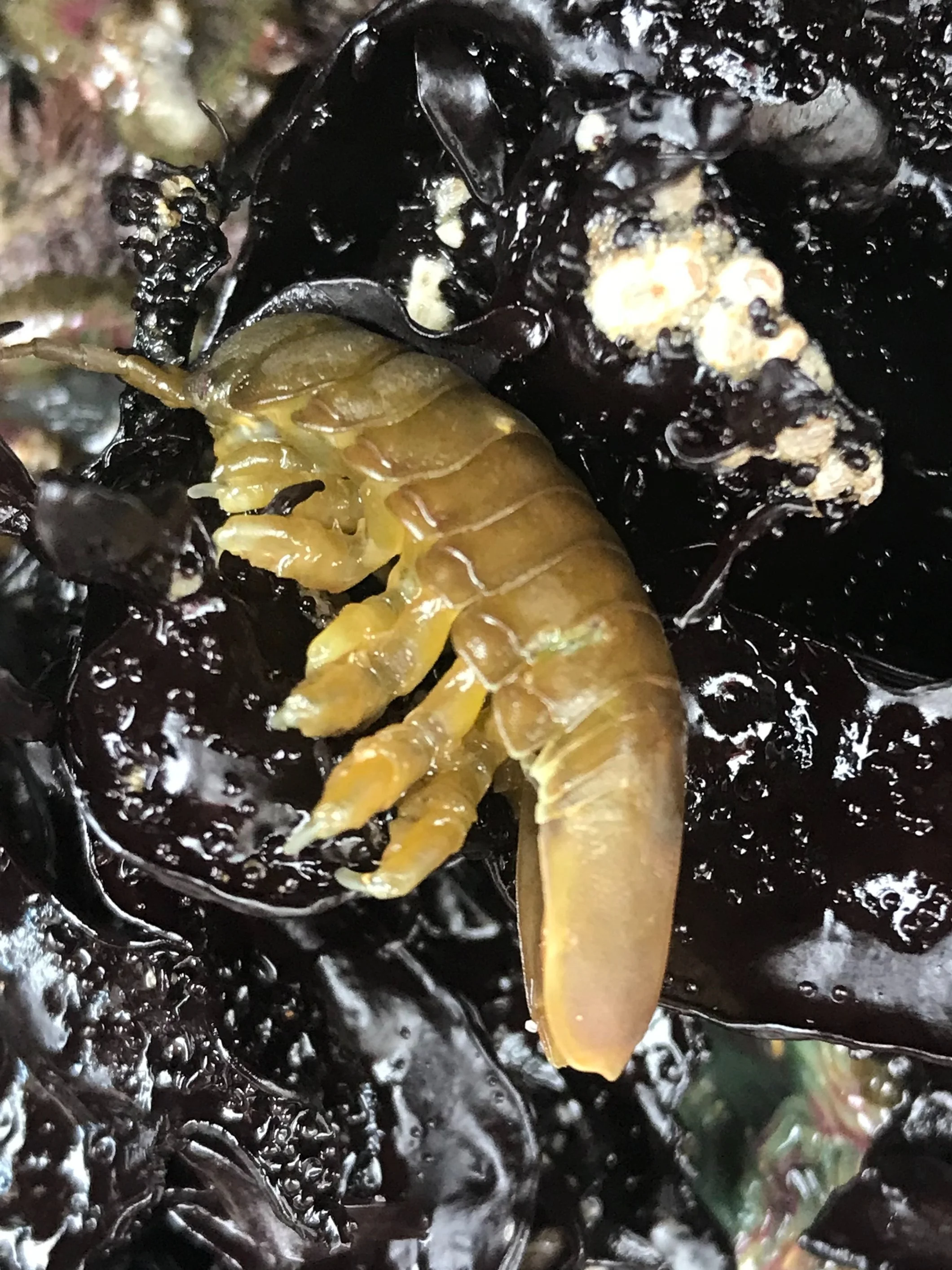Kelp Isopod (Pentidotea wosnesenskii)
Kelp isopod on kelp (photo credit: Zoe O’Toole)
Description: The kelp isopod may also be called Vosnesensky’s isopod, green isopod, or rockweed isopod. It is one of the largest intertidal isopods in the region, growing up to 4 cm long. Their body is segmented, untapered, and flattened. Their color is dependent upon the algae it eats and can range from tan, brown, green, black and even red (along coralline algae). They also can have a few white spots on their body.
Habitat: This species of isopod can be found along the coast in mid intertidal zones from Alaska to central California or in Siberia. They are often abundant in kelp, mussel beds, and under rocks within the intertidal zone.
Diet: Their diet mainly consists of algae, but they will occasionally consume snail egg capsules.
Tide Pool Tidbits:
This species of isopod can swim using specialized legs called pleopods.
Male kelp isopods are larger, paler, and have thicker legs than females.
The other common name for this isopod, Vosnesensky’s isopod, comes from a Russian zoologist name Ilya Gavrilovich Vosnesensky who studied these isopods from Siberia, Alaska, and California.
Reference: Walla Walla University


